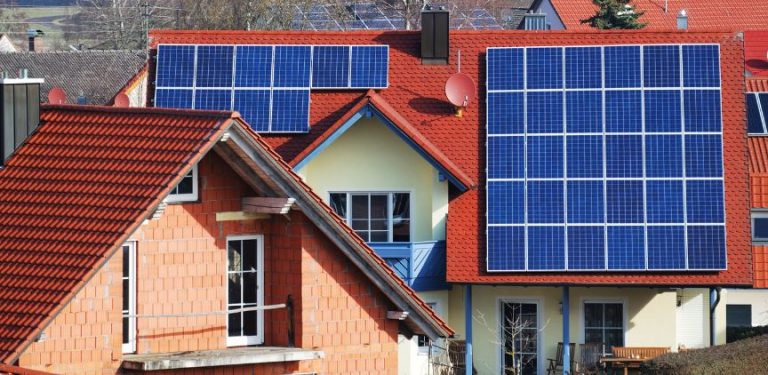Building Your Perfect Garden
Whether you’re new to gardening or a semi-seasoned pro, it’s always good to have some great tips and tricks. Not only is gardening incredibly rewarding, but it’s also a great hobby to have that positively impacts the environment – and there’s nothing quite like growing something yourself from start to finish, is there?
From the best soils to use to the best plants for your garden, we’ve got you covered. Let’s take a look at our top tips to up your gardening game.
1. Plan your Garden in Advance
Before you get started in your garden, it’s important to get to know it – and plan what you want to do:
- Observe where the sun shines brightest throughout the day.
- Do a soil test and find out which soil you already have.
- Look at what’s growing in your garden to see if your soil is more acidic or alkaline.
After your garden assessment, it’s time to plan how you want your garden to look once everything is planted and grown. We know how easy it is to walk into a garden center and go ham, but trust us when we say it’s much better to plan. This way, you can ensure you take structure and color into consideration, which ultimately leads to an incredible garden all year long.
2. Learn How to Plant
One of the key gardening tips and tricks we’d like to focus on is the actual art of planting. Planting plants' property (tongue twister, much?) will guarantee how well they grow and live over time. Once you’ve understood the basics of planting, it’s equally important to learn how to weed and prepare your soil before you plant – add mulch and fertilizer if and when needed. We’d advise looking online for instructions on how to plant a specific type of plant or flower instead of guessing – you’ll thank us later.
3. Use the Best Soil You Can
We know this probably goes without saying, but please use the best soil you can. Investing in decent soil is one of the best ways to ensure your garden grows to the best of its ability. Your soil should always be well-drained and nutrient-rich, which is typically achieved by mixing up to three inches of good-quality garden soil onto the top of up to eight inches of existing soil in the ground. Additionally, be sure to use bed soil if you’re using a raised bed instead, as it’s best for texture and weight.
4. Start Small and Expand Over Time
This is a personal and valid point: start small and work your way up. There’s absolutely no point biting off more plants and vegetables than you can chew if you don’t know how to maintain them long-term. It’s a waste of time and money – and we doubt your plants will be too happy if their pals are dying around them. Choose an area to start with and expand as your confidence grows. It’s the best way to garden, we promise.
Related Search Topics (Ads)
5. Discover the Best Plants and Flowers to Grow in Your Garden
Now the fun begins! How can you find which plants and flowers are best to grow in your garden? We’ll tell you about a few of our favorites, but ultimately, it’s up to you. One thing worth mentioning is that you’ll need to choose plants that match your growing conditions. For example, go for heat-tolerant plants if you live in a warm climate or sun-loving plants in – yes, it seems obvious – sunny conditions. It’s important to research and make sure you’re choosing the right plants and flowers for your garden.
Roses
Roses are a firm favorite among gardeners, and there’s a solid reason for that. Although painted in a relatively picky light, the more recent rose breeds have been bred to be more resistant to disease and can be long-blooming in the right environment. In terms of maintenance, as you stick to a shrub in the beginning, they require almost zero care – not to mention they look gorgeous in any garden – which is why we love them.
Succulents
Possibly the lowest maintenance type of plant on planet earth, succulents are designed with (almost) carefree gardeners in mind. With dozens of varieties in all shapes and sizes, succulents are a fantastic addition to any garden space. They’re super easy to grow, many are cold-hardy, and they’re usually pretty resilient and happy to survive dry or cool spells. All that’s left to do is choose which ones you’d like.
Herbs
There’s a bit of a running theme here, but if you’re looking for ways to up your gardening game with ease, then growing plants and vegetables that are low maintenance is the way to go. Herbs are easy – and fun – to grow as their flowers attract abundant pollinators. They’re also way less expensive to grow than the pre-grown containers you can find at the grocery store. From perennial herbs like sage, thyme, and oregano to spring herbs like basil and cilantro, there’s a wild world of herbs just waiting for you to plant.
6. Schedule How Often to Water your Garden
One of the gardening tips and tricks that we can't stress enough is knowing how often – or not – to water your garden. And that all depends on the type of plants, flowers, vegetables, and fruits you have planted. No pressure, but watering plants is the difference between thriving or barely surviving. Our advice? Research each of the plants you have and their optimum watering times. From here, plan a weekly watering schedule that makes sense for you and your garden.

